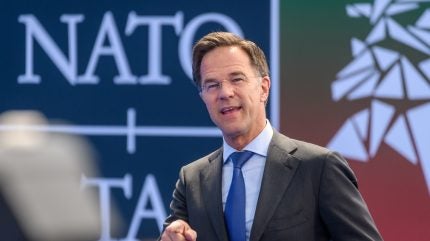
Amid escalating concerns over regional security and the resurgence of high-intensity warfare in Europe, the Netherlands is set to ramp up its defence expenditure, according to forecasts by GlobalData.
The move comes as Dutch Prime Minister Mark Rutte eyes the role of Nato Secretary General, seeking to bolster the alliance’s capabilities in a tumultuous geopolitical landscape.
GlobalData’s latest report, “Netherlands Defense Market Size, Trends, Budget Allocation, Regulations, Acquisitions, Competitive Landscape and Forecast to 2029,” underscores the Netherlands’ proactive approach to enhancing military readiness and fulfilling its commitments to Nato. Projected to surge from $22.8bn in 2024 to $31.2bn in 2029, Dutch defence spending reflects a concerted effort to bolster national security and contribute more to collective defence efforts.

The Dutch government’s heightened focus on defence modernisation is evident in the significant expansion of its acquisition budget, which soared from $2.8bn in 2020 to $5.7bn in 2024. With an anticipated growth trajectory reaching $8bn by 2029, the acquisition budget underscores the Netherlands’ resolve to upgrade its military capabilities and adapt to evolving security challenges.
The Netherlands recently awarded Naval Group a contract to construct four new Barracuda-class submarines. These submarines will balance shallow- and deep-water operation capabilities and strategic autonomy per NATO standards.
Fox Walker, defense analyst at GlobalData, highlighted the role of geopolitical dynamics in driving the Netherlands’ defence agenda. “In light of mounting security threats and uncertainties surrounding transatlantic security cooperation, the Netherlands is intensifying its efforts to bolster military capabilities and fulfil its Nato commitments,” Walker remarked.
The Netherlands, in a series of recent diplomatic and military moves, has bolstered its support for Ukraine amidst ongoing tensions with Russia. Firstly, the Dutch Defence Minister announced the donation of six additional F-16 fighter jets to Ukraine.
This decision coincides with a broader ten-year security agreement signed between the two countries, emphasising long-term military support, defence industry strengthening, and cyber resilience enhancement.
Additionally, the Netherlands has pledged €250m ($272m) for artillery procurement and is delivering 14 rigid hull inflatable boats, eight militarised river patrol boats, and CB90 assault craft to bolster Ukraine’s maritime capabilities—this escalation of aid supplements previous contributions.
Prime Minister Rutte’s bid for the Nato Secretary General position adds a compelling dimension to the Netherlands’ defence strategy. Despite facing scrutiny for the country’s defence spending hovering just above 1.0% of GDP during his tenure, Rutte’s aspiration shows a renewed commitment to bolstering Western Europe’s defence posture.
However, Rutte’s candidacy has sparked debate, particularly with Estonian Prime Minister Kaja Kallas emerging as a contender. With Estonia poised to increase defence spending to 3.2% of GDP in 2024, Kallas presents a compelling alternative, signalling a potential shift in Nato leadership dynamics.
As the Netherlands charts a course towards bolstering its defence capabilities and navigating complex geopolitical terrain, the trajectory of its military expenditure underscores a juncture in European security dynamics. With Prime Minister Rutte’s Nato ambitions at the forefront, the Netherlands is poised to play a decisive role in shaping the future of transatlantic security cooperation.







